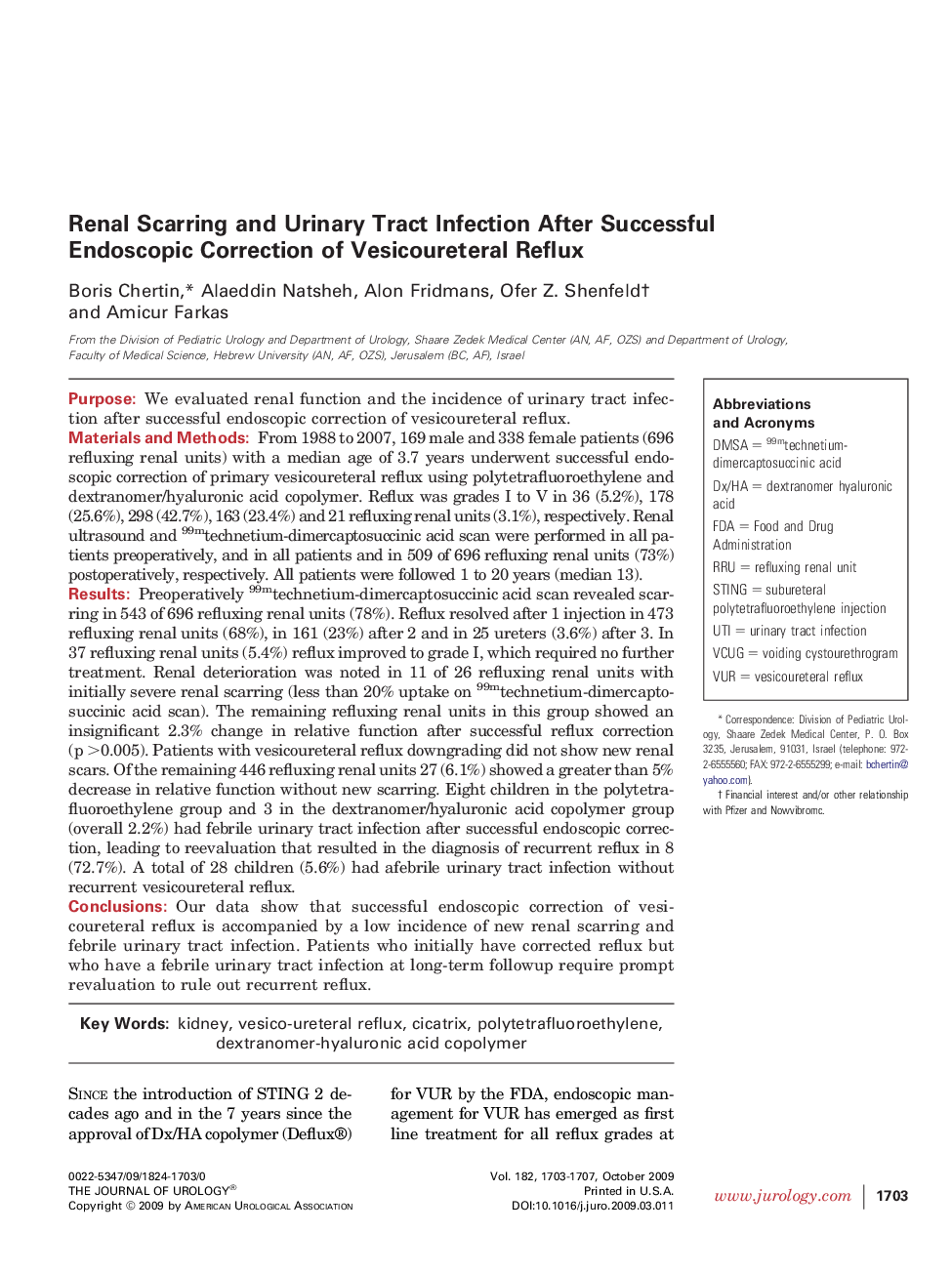| Article ID | Journal | Published Year | Pages | File Type |
|---|---|---|---|---|
| 3869310 | The Journal of Urology | 2009 | 5 Pages |
PurposeWe evaluated renal function and the incidence of urinary tract infection after successful endoscopic correction of vesicoureteral reflux.Materials and MethodsFrom 1988 to 2007, 169 male and 338 female patients (696 refluxing renal units) with a median age of 3.7 years underwent successful endoscopic correction of primary vesicoureteral reflux using polytetrafluoroethylene and dextranomer/hyaluronic acid copolymer. Reflux was grades I to V in 36 (5.2%), 178 (25.6%), 298 (42.7%), 163 (23.4%) and 21 refluxing renal units (3.1%), respectively. Renal ultrasound and 99mtechnetium-dimercaptosuccinic acid scan were performed in all patients preoperatively, and in all patients and in 509 of 696 refluxing renal units (73%) postoperatively, respectively. All patients were followed 1 to 20 years (median 13).ResultsPreoperatively 99mtechnetium-dimercaptosuccinic acid scan revealed scarring in 543 of 696 refluxing renal units (78%). Reflux resolved after 1 injection in 473 refluxing renal units (68%), in 161 (23%) after 2 and in 25 ureters (3.6%) after 3. In 37 refluxing renal units (5.4%) reflux improved to grade I, which required no further treatment. Renal deterioration was noted in 11 of 26 refluxing renal units with initially severe renal scarring (less than 20% uptake on 99mtechnetium-dimercaptosuccinic acid scan). The remaining refluxing renal units in this group showed an insignificant 2.3% change in relative function after successful reflux correction (p >0.005). Patients with vesicoureteral reflux downgrading did not show new renal scars. Of the remaining 446 refluxing renal units 27 (6.1%) showed a greater than 5% decrease in relative function without new scarring. Eight children in the polytetrafluoroethylene group and 3 in the dextranomer/hyaluronic acid copolymer group (overall 2.2%) had febrile urinary tract infection after successful endoscopic correction, leading to reevaluation that resulted in the diagnosis of recurrent reflux in 8 (72.7%). A total of 28 children (5.6%) had afebrile urinary tract infection without recurrent vesicoureteral reflux.ConclusionsOur data show that successful endoscopic correction of vesicoureteral reflux is accompanied by a low incidence of new renal scarring and febrile urinary tract infection. Patients who initially have corrected reflux but who have a febrile urinary tract infection at long-term followup require prompt revaluation to rule out recurrent reflux.
